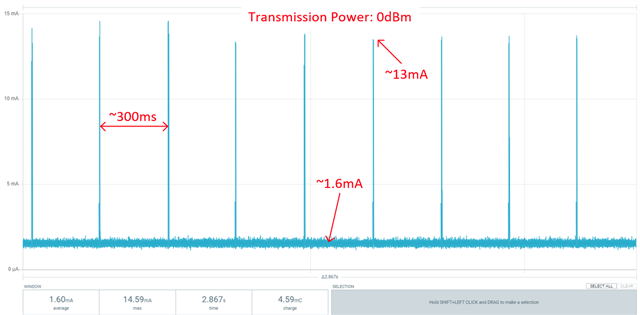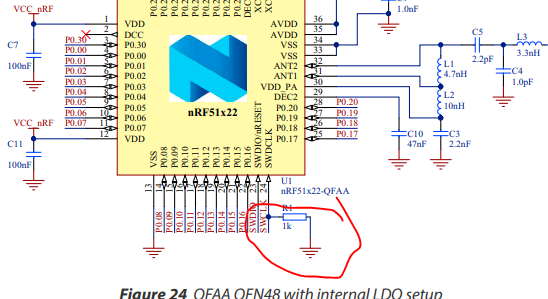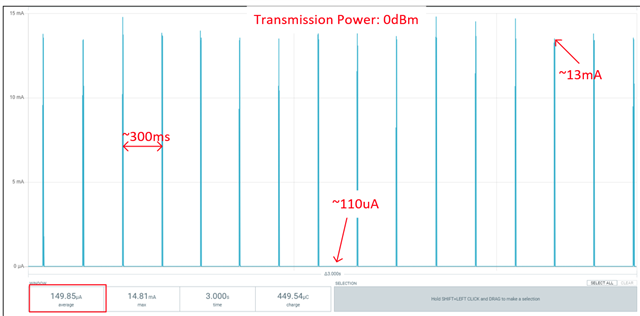Hello, guys.
We are using nRF51822 SoC in our project. I would really appreciate your help with the expected current consumption in BLE advertising mode. Here is what we record with the Power Profile Kit II (BLE advertising interval is set to ~300ms and transmission power is equal to 0dBm):

We are using the Power Management library that is supposed to put the CPU in System ON sleep mode between two advertising cycles because we don't have any other activity while advertising. Moreover, all the peripheral chips we have on the board are put into shutdown mode during BLE advertising.
- The average current consumption between two BLE advertising cycles is ~1.6mA. Is it an expected value or it should be way smaller? All the peripherals consume about ~100uA of current when in shutdown mode (this is the current consumption we measure when we put nRF51822 into System OFF sleep mode).
- Current peaks during BLE advertising (~13mA) do not change at all even though we change the transmission power from 0dBm to -20dBm. We don't enable the internal DC/DC converter because we are missing an external capacitor and inductor on the current version of the board. To the best of my understanding after reading Chapter 12 of the nRF51 reference manual, and Chapter 8.5 of nRF51822 Product Specification, using an internal DC/DC converter with 3.3V external supply voltage would help us reduce radio power to a factor of 0.65 - 0.8, depending on the used transmission power. Is my understanding correct?
Thanks in advance for your time and efforts.
Cheers,
Bojan.


